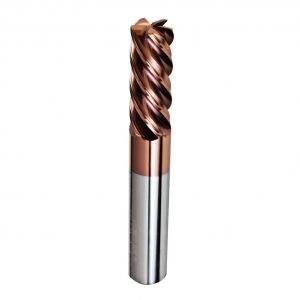If the machine has enough horsepower to enable the tool to operate at a depth of more than 1/4 inch (6.4 mm) per track, this process can be done economically. If not, the activity in this way is likely to be slow and inefficient.
The button cutter provides the most aggressive selection hole creation while also allowing the operation to be removed prior to drilling. How to? The combination motion of screw interpolation (X,Y,Z) is inserted into the hole. This is done by locating the OD position of the cutting tool inside the diameter, rather than positioning the tool at the hole center. The program then instructs the tool to begin the interpolation of the round hole, but the downward motion with the z axis is rotated through the hole through every 360. The tool movement has a lift effect, allowing tools to gradually move into workpieces and quick metal removal, all of which have a smooth cutting tool and machine itself. A typical operation is:
Hole size: 4 (203-mm) diam
Hole depth: 2 inches (51 mm) depth
Tools used: 2(51 mm) diam button mill and four inserts
Method: place the tool at the 3 o ‘clock position of the hole, about 0.100 inch (0.03 mm) higher than z-0 (top of the workpiece). Execute an arc command, take the tool back to the starting position and move the tool to Z incrementally, usually 0.050-0.100 (1.25-2.5mm). (the helix command has many different programming methods, but they won’t be discussed here.) Continue with this action until you insert the centerline through the bottom of the section. At this point, return the tool to the centerline and retract.
Although the square shoulder tool for this exercise, but button tools allow more aggressive slope Angle, and to provide better protection for cutting chip, this is the most challenging aspect of helical interpolation. This process strongly recommends strong air shock waves.
